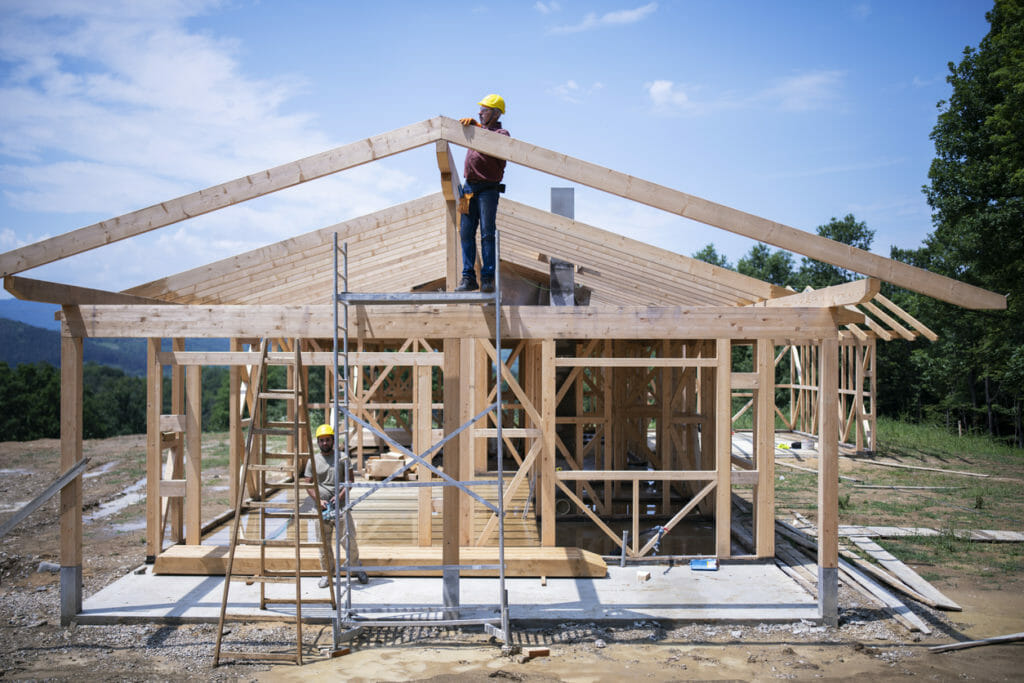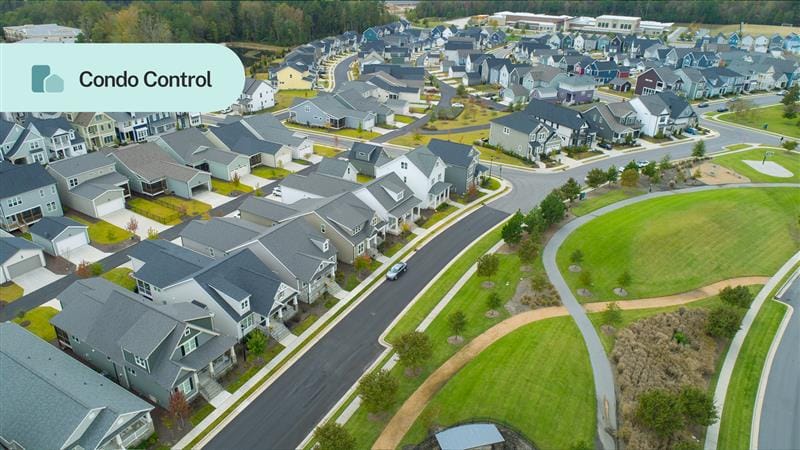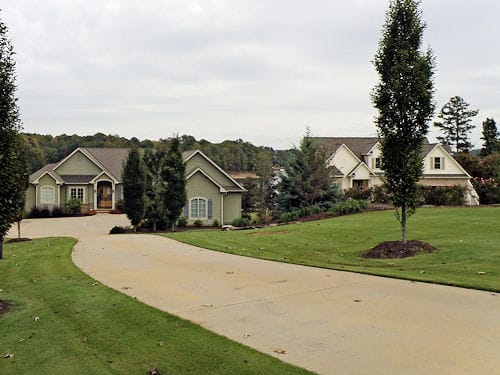Homeowners who move into a planned, covenanted community, generally understand that they will be required to abide by some specific rules, including the Declaration of Covenants, Conditions, and Restrictions. Commonly referred to as CC&Rs, these rules largely influence how the community operates.
Table of contents
- How new CC&Rs are made
- Don’t rush through the CC&Rs
- Items to cover in the CC&Rs
- Enforcement
- Transferring ownership of the HOA
CC&Rs cover the rights and obligations of HOA members. The document is actually recorded and filed with the land records in the county where the HOA is located, making the content written in the CC&Rs legally binding.
The goal of the CC&Rs is to protect, preserve, and enhance property values in the community, so it’s important that this document be detailed and thorough.
Developers make the first set of rules for a new HOA
CC&Rs are different for every community in part because the developer that creates the HOA is also the one responsible for writing the first set of covenants, conditions and restrictions. Before members take over the association, the developer is in control, and the CC&Rs help ensure there is order and consistency as the community grows.
The items contained in the CC&Rs are considered an inherent part of any common interest development, and are crucial to the stable, planned environment of a shared living community like an HOA. The developer creates and records the CC&Rs as an “equitable servitude,” an agreement or contract between two or more parties that limit their use of property, to ensure everyone who has an interest in the development uses the property as it was intended to be enjoyed.
Most developers will produce CC&Rs that they believe will best serve the community, but they can’t plan for the unforeseen. Unique issues do arise, and things change over time. As a result, the CC&Rs may become ambiguous.
Fortunately, associations do have the option to formally amend and restate their CC&Rs to reflect changes in the law, to address circumstances that have not been included in the document, or to modify the rights and obligations of the association and its members.
Developers may choose to consult with a legal professional and hire an HOA management company to ensure the CC&Rs comply with county and state laws, and that rules laid out in the document can realistically be enforced. An HOA manager can also help developers identify any gaps or vague language that could cause issues once members take over control of the association.

Don’t rush through the CC&Rs
CC&Rs dictate so much about how the community will operate. The board and HOA members will regularly turn to this document to figure out how to move forward with everything from issues regarding pets to fines and liens.
CC&Rs typically outline the boundaries of each lot, and those of the development’s common area as well. They detail what the association is responsible for maintaining, what responsibilities belong to each owner, and the rights and protections granted to mortgage holders.
They state how initial board members are to be selected, voting rights, and other items that are essential to the smooth operation of the association. Vague rules lead to confusion, misunderstanding and arguments, which is why developers are encouraged to create CC&Rs that will set the development up for success.
CC&Rs can be changed once members take over, but they often have a declared term of existence too. The good thing about creating covenants with fixed terms of life is that future property owners won’t be burdened with restrictions that have become dated.
A well-written covenant could serve the community for two to three decades, and once it has expired, new owners can either agree to extend the life of the covenants, or adopt new ones. They would also have the option to petition local zoning boards to rezone their neighborhood as commercial or multi-family residential properties in order to maximize the return on their investments.
Items to cover in the CC&Rs
CC&Rs can include rules for many different things, including how the land and the individual homes may be used or altered, how the property must be cared for, and where vehicles can be parked. Below are some of the items that developers will include in their CC&Rs:
- Rights of enjoyment concerning common property
- Rights and responsibilities of the association to maintain and care for common property
- Member voting rights. This will outline who can vote, how participants may cast votes, and how many votes the declarant is entitled to
- Rules about the board of directors
- When the developer must turn control of the association over to the owners who live in the development
- Assessments, including how assessments must be approved and how they should be issued
- Maintenance responsibilities belonging to the association. This could include whether or not the association will mow lawns or repaint homes for owners
- Maintenance responsibilities belonging to individual owners. This could include whether or not the owners must shovel their walkways and sidewalks in front of their homes
- What happens if owners do not maintain their property. There will usually be a certain amount of time in which the owner must complete the action requested by the association
- Architectural review guidelines. This section would include details about any committee designated to review and approve architectural changes, submission processes, and approval/rejection processes
- Using a home for business purposes. The HOA may not allow owners to run a small business out of their home if it may create issues for other owners. For example, if clients must drive to see the owner, and the clients take up many parking spots on a regular basis, the HOA may forbid this type of business from operating on the development
- Siding requirements. Some HOAs may only approve siding that is made of brick, or a couple of other materials. This is done to maintain uniformity and the aesthetics of the development
- Holiday décor. Christmas and holiday lights that are visible to others may only be permitted during a particular time. For example, HOAs may allow lights to go up after American Thanksgiving, and require that they be taken down by the end of January of the following year
- Many communities want restrictions on the types of animals that owners can keep on the property. There may be limits on the number of dogs one home can own, or restrictions around certain breeds. Potbelly pigs and chickens may be prohibited
- Storage and disposal of garbage
- Swimming pools. This issue can be a contentious one. Some HOAs will permit above ground pools, while others won’t even entertain the idea
- Surveillance cameras. Private surveillance cameras are becoming increasingly common. By creating rules for them before owners move in, they can follow a clear roadmap on what is and is not allowed
- Construction and sale period
- There may be requirements for the board to review policies annually to ensure the HOA has adequate coverage
- Mergers or consolidation. This explains how a merger may occur, and what happens to the rules and obligations of the association that is merging with another association
The document is not a short one, but the little details make a big difference when it comes to CC&Rs.
Enforcement
CC&Rs are enforceable unless they are unreasonable. There are fines or other violations that can be imposed on an owner or tenant for breaking the rules, and if necessary, the HOA can arrange to fix the issue itself and send the owner the bill. If the situation cannot be remedied, an owner can be taken to court.
Courts will enforce an association’s CC&Rs unless they are arbitrary, violate a fundamental public policy, or impose a burden that far outweighs any benefit. Taking a dispute before a judge should never be the first option as it takes up time and resources. That being said, court may be necessary to enforce the CC&Rs in rare circumstances.
The association can’t enforce the CC&Rs in such a way that would violate county, state or federal laws. Enforcement must be in good faith, in line with what the document prescribes, and by procedures that are fair and uniformly applied.
Both the association and members have the right to enforce the CC&Rs. However, the board has an obligation to ensure CC&Rs are enforced, and therefore, has some enforcement powers that individual members do not.
Transferring ownership of the HOA
A transfer of ownership is usually provided for by the developer in the initial covenants filed with the city or county at the time the development was approved. So, as an example, the document might say that the developer will relinquish control of the HOA 90 days after 60% of the total lots in the development have been sold by the developer, or 30 days after seven years of developer control, whichever occurs first.
The actual transition is usually accomplished at a special meeting that is held to elect owners to serve on the board. But, the transition process can take anywhere from 12 months to two years before the official developer turnover. Once the owners are in control, the developer is no longer responsible for managing the association.
Successful transitions occur when the developer and the owners can work collaboratively and fulfill the duties they are responsible for. A productive transition takes the collective interests of the developer and the owners, and caters to the needs and expectations of both parties.
The developer should do its very best to ensure the new board has all of the information it needs, including financial documents explaining the status and financial health of the development, rules that the HOA must follow, and any potential issues that need to be monitored or resolved in order for the HOA to be successful.
Owners will want to read the CC&Rs, and get clarity from the developer on anything that is unclear or vague. They should also read all of the contracts that the developer has entered into on behalf of the association to understand who they have current relationships with. In some states, as long as a board provides 90 days’ notice, it can terminate certain developer-signed contracts.
The owners may put together a developer’s liaison committee so that when it comes time for the transition, the HOA already has a group of individuals who understand how the association operates.
Finally, both parties should make a concrete effort to tie up loose ends before the date of the turnover. With so much going on, it’s easy to forget the small stuff. Work together with owners whenever possible, and be respectful of timelines.
Conclusion
CC&Rs are limits and rules placed on a development. They begin with the developer, but once the HOA is managed by owners, it’s up to the new board members to enforce the rules in this document. The document may vary from community to community, and it can be amended for clarity or relevance.
CC&Rs do impose some restrictions that may be inconvenient to owners, but these rules help to ensure that everyone can reasonably enjoy their neighbourhood. Furthermore, they work to maintain the value of the homes in the HOA.
Most covenants “run with the land,” meaning that they subject the property, and not the current owners, to the items contained in the CC&Rs. In this case, the liability to follow the CC&Rs passes with the land to any subsequent owners.
Good CC&Rs could be around for multiple decades. More importantly, they help create happier, more organized HOAs.
Download Template
Download our free CC&Rs template























